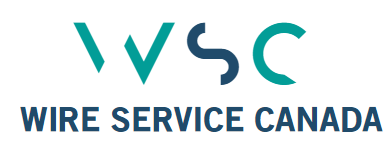Kushantdeep Singh was born in 1999 in Bipur, Punjab, India. Like everyone else in Bipur, Singh is a farmer: they have a small plot of land, a farm with some cows and some buffaloes. But unlike the others they decided to invest in Kushantdeep’s education. So while most of the village children went to the local public school, little Singh went to a private school in the nearby town of Patiala. The family spends only a third of their income on education. His father deliberately hired him to take him to town in a rickshaw and ride with the other students. Along the way – an hour and a half later – advertising posters lined the streets. Kushandeep knew them heartily: first they were from local restaurants and shops, then from McDonald’s. During the high school years, many billboards began to advertise different products. Education after graduation. In Canada.
For many families this was an attractive offer. It is sending their children to study in an English-speaking country, with safe and, above all, tolerant immigration policies. Because Kushandeep was well educated at school and well versed in English, his parents began to seriously consider enrolling him in a Canadian university. They did what everyone in Punjab did: they turned to a recruiter.
Canadian dream
It is estimated that there are tens of thousands of intermediaries in India alone, however there is no way to know the exact number as this sector is not regulated. Their offices in Patiala are everywhere. They are the ones who link students like Kushandeep to community colleges (local training centers that offer two-year courses) and universities abroad, fill out the required documents and apply for a visa. Usually they are not paid by families, but are paid by universities, who willingly spend this money with the possibility of charging four or five times more international fees than normal.
In Canada, thanks to federal policies that greatly promoted this strategy, in 2019 there were 642 thousand foreign university students (in 2011 they were about 239 thousand); Overall, 34 per cent of Indians and many others are from Punjab villages. According to press releases and government reports, international tariffs guarantee more than $ 21 billion in revenue to Canada each year, more than the auto parts industry and the timber industry.
To settle in the country, a boy or girl must first obtain a study visa, regardless of which college or university; After graduation, you need permission to live and work there for a maximum of three years; With that permission he can apply for permanent residency, which is awarded on the basis of marks based on English knowledge, education and professional experience. When explaining these steps, the experienced recruiter will show you everything very simply. It does not focus on the teachers who need to be selected to get enough points or on the actual probability of getting long-term admission. The Canadian government does not say how many students who apply for permanent residency will receive it later. In 2015, the Canadian Statistics Institute estimated that they could be as high as 20 to 27 percent.
In the winter of 2017, Kushandeep graduated from Quantum Polytechnic University (KPU) in Surrey, a remote area in the province of British Columbia, at a university he had never heard of. That year, KPU admitted 6,000 foreign students (up from 525 ten years ago) and made a profit of $ 22 million. The agent when he returned to Patiala promised him a comfortable and successful life, but it was bitterly cold when Kushandeep came to Surrey, his roommates were not there because they worked constantly and everything was very expensive. He paid $ 400 a month for a bed, $ 50 for a bus pass and $ 200 for groceries to share with one of his new roommates. He had to quickly find work. The law allows students to work a maximum of twenty hours off-campus, which is not enough to cover the costs. So in the end most men and women agree to be paid in black and get paid much less than the minimum wage.
Some left during epidemics, many lost their jobs and had to leave college. Kushandeep, despite many difficulties, graduated and obtained a three-year visa. Its history and the system that transformed the universities of Canada made them dependent on the fees of foreign students and therefore intermediaries. Canadian Monthly Magazine The Walrus.





Leave a Reply